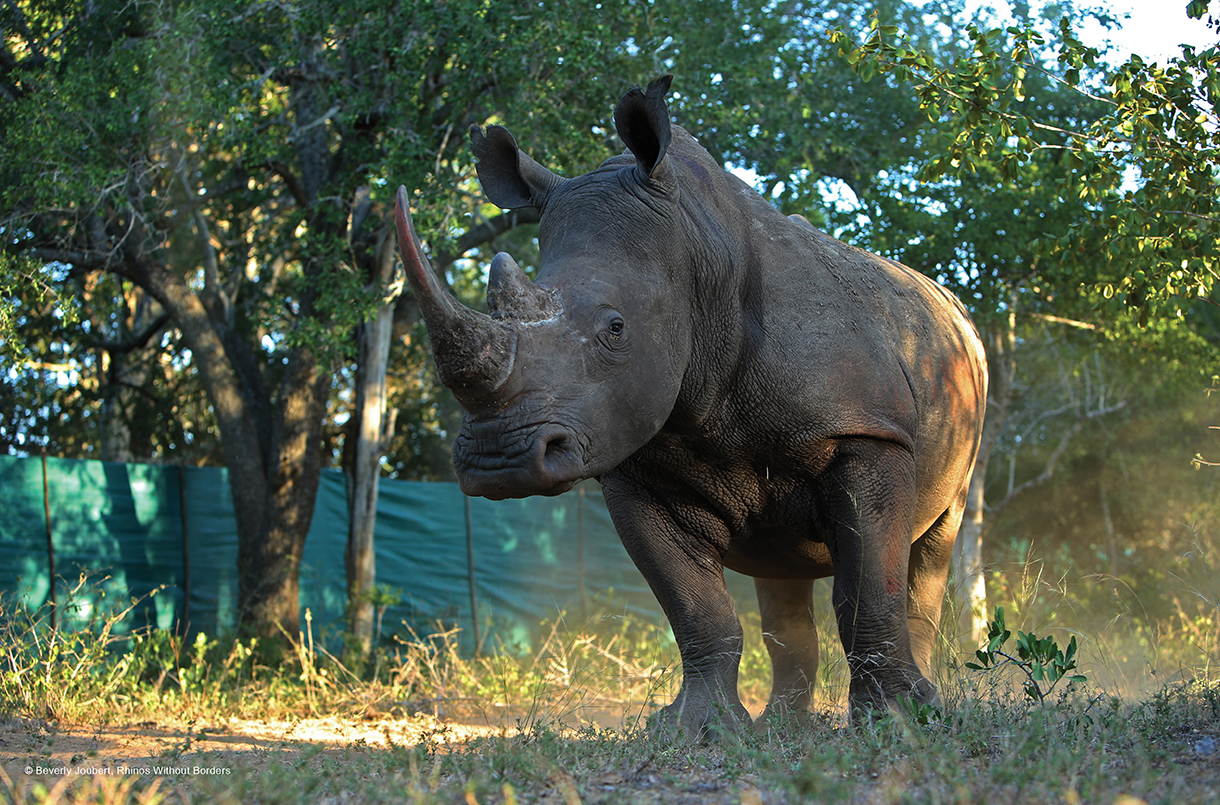
Super-Sized Safaris
Ultimate upgrades to boost even the most perfect safari experience.
Rhino Encounter
One of the first and most-lasting impressions learned in the bush is that everything is connected. andBeyond (andbeyond.com)—the leading conservation company that grew into a luxury safari purveyor by leveraging upscale travel as a means to fund its efforts to care for wildlife and people—pools its resources to facilitate rare, behind-the-scenes experiences.
Those interested in going beyond traditional game drives can pay extra for the privilege to tag along with and lend a hand to the professionals who manage the wildlife. Though they are at the behest of the conservationists who may be collaring an elephant, for example, snapping a selfie is not part of the experience. Rather, helping the game managers when they need to do such tasks is. At the Phinda Private Game Reserve in KwaZulu-Natal, South Africa, ecologists like Craig Sholto-Douglas track rhinos that have been fitted with ankle-bracelet transmitters.
The reserve encompasses nearly 70,000 acres in eastern South Africa that were resurrected from derelict farmland to their original wildlife-rich splendor, and Sholto-Douglas heads out on an old-school excursion tracking by telemetry. Listening for pings on a handheld radio connected to a metal antenna that he holds aloft as he drives, he locates the general vicinity of the rhino. A guest accompanies him and helps by pointing the antenna to the north, south, east, and west, looking for the strongest signal. They set out on foot, along with an armed guide, to find the rhino grazing with a friend, who still had its horn.
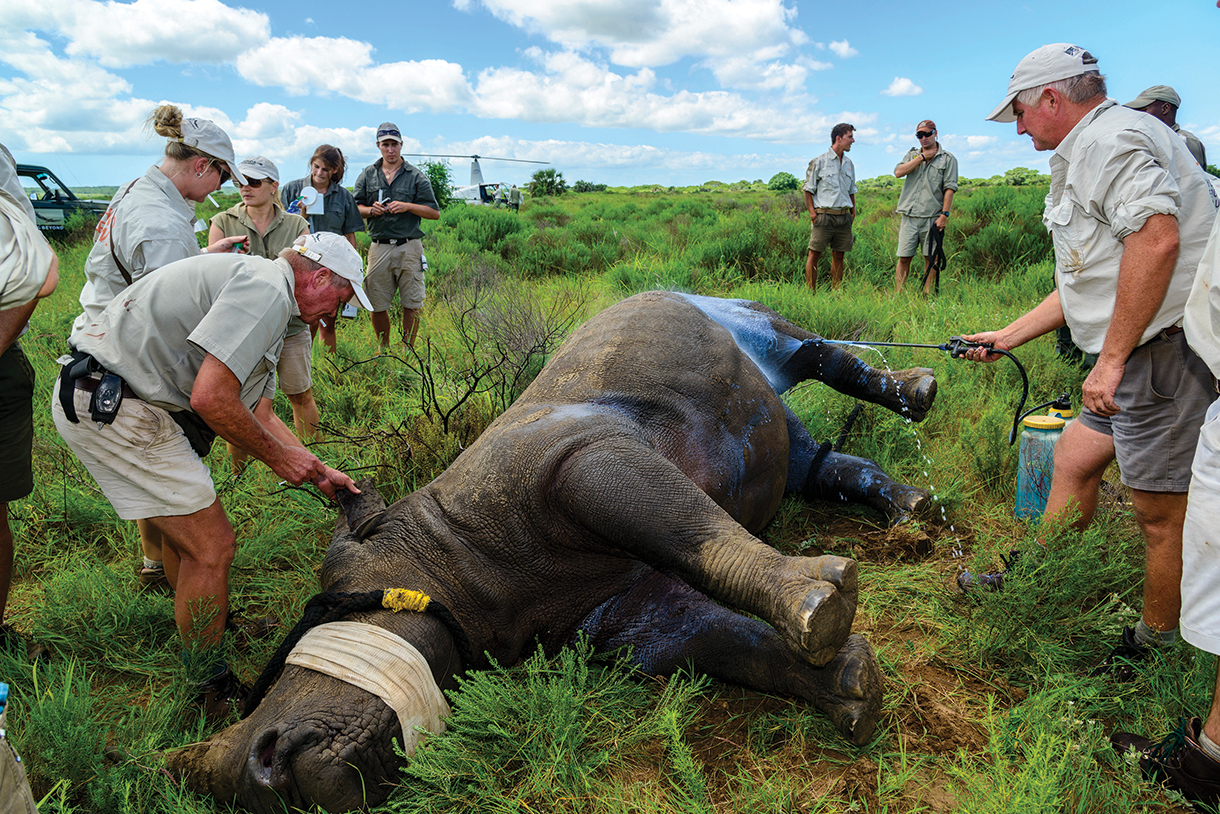
Poaching rhino horns is an epidemic fueled by demand from the Far East. The prize is more valuable than gold—despite reams of proof that it is not an aphrodisiac nor has medicinal value (the horn is simply keratin, the same material as fingernails). In 2007, the total number of rhinos poached in South Africa was 13. By 2014, the number skyrocketed to an all-time high of 1,215. Various measures have been tried to deter poachers, including injecting horns with colored dye or poison, neither of which harms a rhino. Yet the only measure proven to work is removing a rhino’s horn. Not having a horn does not hurt a rhino—they grow back—nor does it overexpose the animal to predators like big cats, which typically do not see rhinos as prey. At Phinda, where resources are abundant, lion and leopard easily pick off impalas and nyalas instead.
The number of rhinos killed by poachers in South Africa is on the decline (769 in 2018), and since Phinda started dehorning, only one animal has been shot (it was left otherwise untouched, presumably when it was found not to have its horn). Dehorning at the reserve takes place in July and August, and guests who time it right can participate, typically aiding with functions like collecting hair samples and monitoring vital signs.
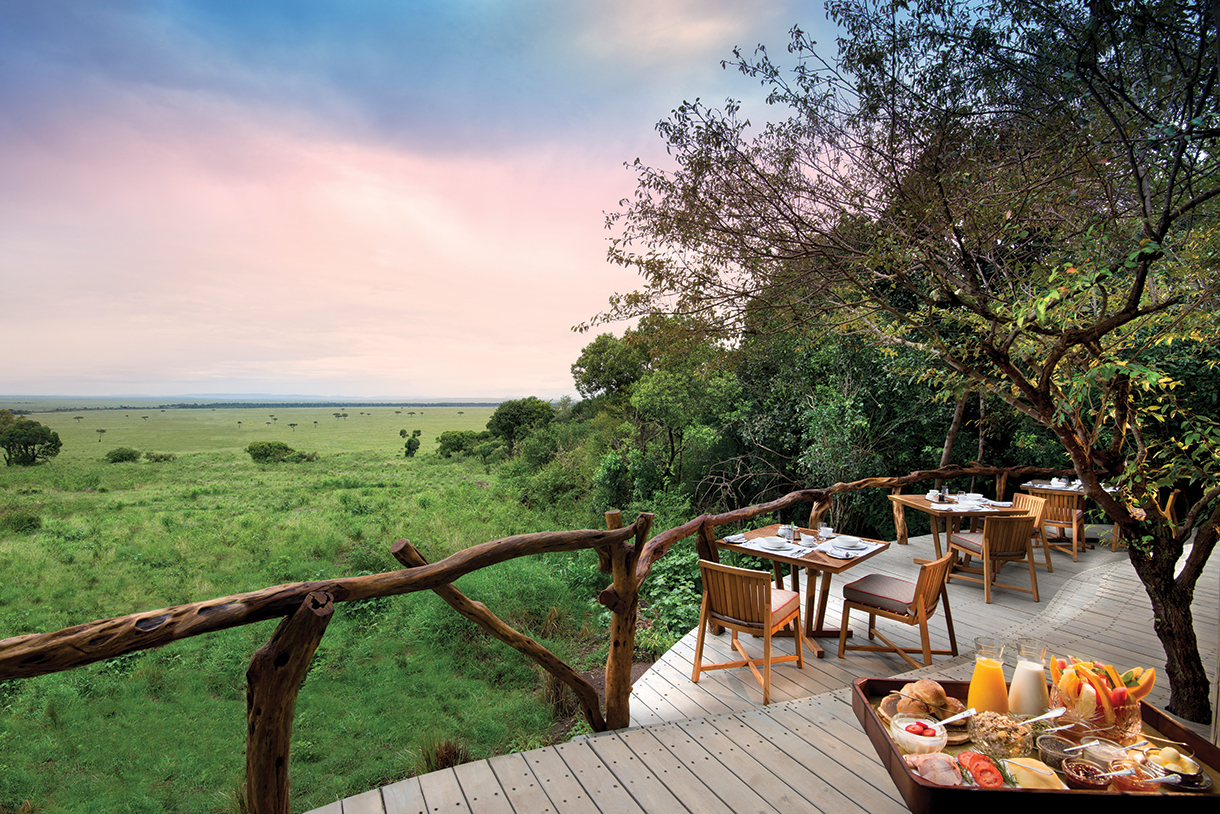
A Photo Quest
At andBeyond’s newly renovated Bateleur Camp (andbeyond.com) at the foot of the Oloololo escarpment on the rim of Kenya’s Great Rift Valley, find fully customized photographic safari vehicles and specialist photographic guides who assist guests in capturing standout wildlife images. These new vehicles—which should be booked ahead to ensure availability—were designed by photographers and feature clever advances, including open sides for unobstructed, elevated views and seating in the center so guests look out rather than forward. Instead of benches, the five guest seats are individual, gas-lifted, 360-degree swivel chairs with custom camera mounts to provide a smooth base for equipment. The truck is loaded with electrical charging points for camera batteries and air-conditioning to allow for longer drives, which is especially valuable during the migration season when it’s impossible to pull your eyes away from those heart-stopping Mara River crossings (conveniently located just a mile from Bateleur). Another improvement prolonging customer satisfaction: the onboard bar.
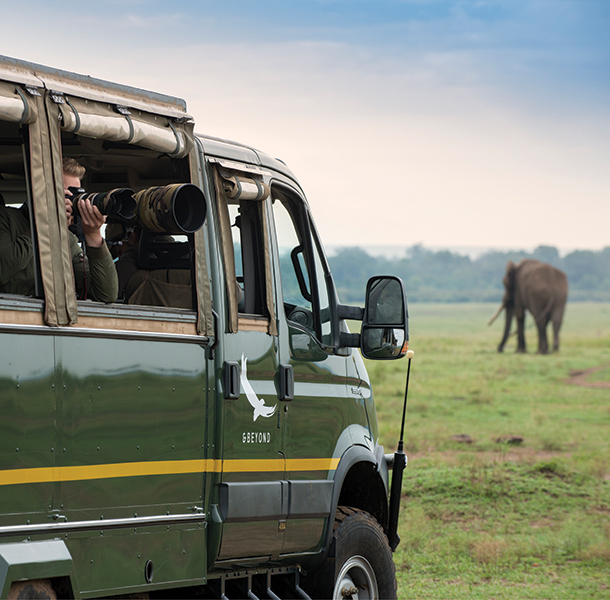
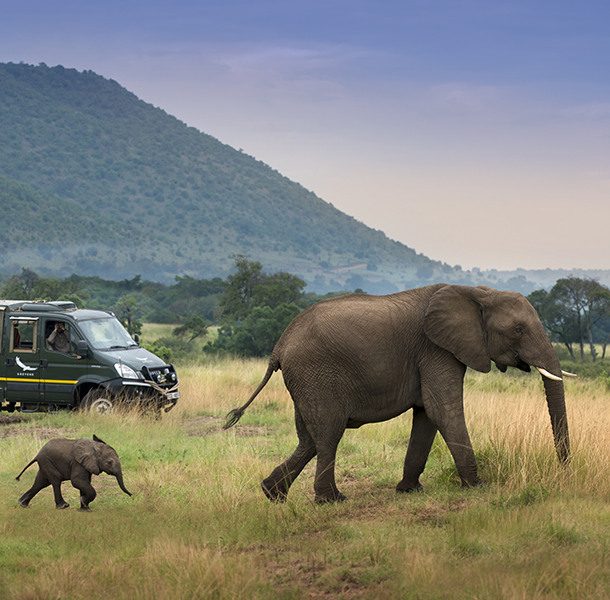
A Jet Journey
Private jet in bush terms is not quite the same as rush hour at Teterboro Airport—these runways are short, and there is no room for Gulfstreams or Global 6000s. But Calmeyer of Roar Africa says her clientele base of CEOs is very happy with the Cessna Caravans and PC-12s that allow groups of eight to move quickly and comfortably through the region with expedited international border crossings. It’s a far cry from the commercial bush flight system that, while far better than driving from camp to camp, can nonetheless feel crowded and somewhat haphazard due to the unpredictable flight plans. “It’s a no-brainer,” once you explain the advantages, says Calmeyer.
Comfort and convenience aside, these small jets enable travelers to plan more ambitious itineraries, combining destinations that would be impossible to cover in 10 days relying on commercial routes. Grant Telfer, who heads up andBeyond’s Mwewe Ranger Training School, knows the advantages of leading this kind of journey. “You can much more easily include the gorillas in Rwanda or Uganda this way, and then go on to Ngorongoro Crater, the Maasai Mara, the Serengeti, and even Victoria Falls, Botswana, Namibia, or South Africa,” he says. Another bonus is having the same guide throughout your journey, supplemented with local expertise at the various camps and lodges where you stay. Together you can work out a strategy of what you want to see, do, and avoid, with the convenience of revising as you go.
Some of the larger safari outfitters, including TCS World Travel (tcsworldtravel.com) and Lakani (lakani.com), have added private jet packages to their portfolios, enabling couples and smaller groups to take advantage of the luxury and flexibility without shouldering the entire cost. The itineraries are fixed but the range is much more comprehensive than what can be covered in a trip that relies on commercial routes.
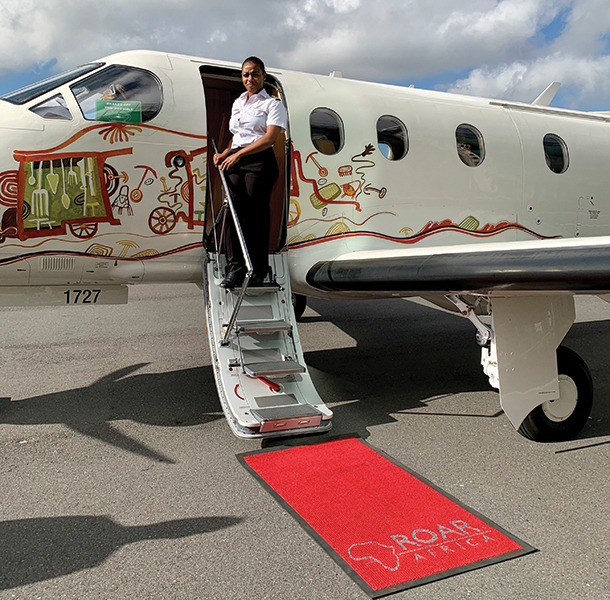

An Island Escape
An innovative initiative launched last year allows guests to combine a sybaritic sojourn at two of Africa’s most luxurious islands—andBeyond Mnemba Island and andBeyond Vamizi Island (both within easy range of Kenya and Tanzania)—with an important philanthropic cause.
Oceans Without Borders (andbeyond.com) was established as a partnership between andBeyond and the Africa Foundation to expand the focus of wildlife conservation to include the protection and sustainability of the sea. Its goal, says operations manager Tessa Hempson, is to create marine-based conservation programs that direct social and economic benefits to local communities, using a model that has been successful for its founding partners across game reserves in Sub-Saharan Africa: care of the land (in this case, the reefs and ocean), care of the wildlife, and care of the people. That formula includes research; conservation initiatives; collaborating with communities and governments; and guest engagement and education.
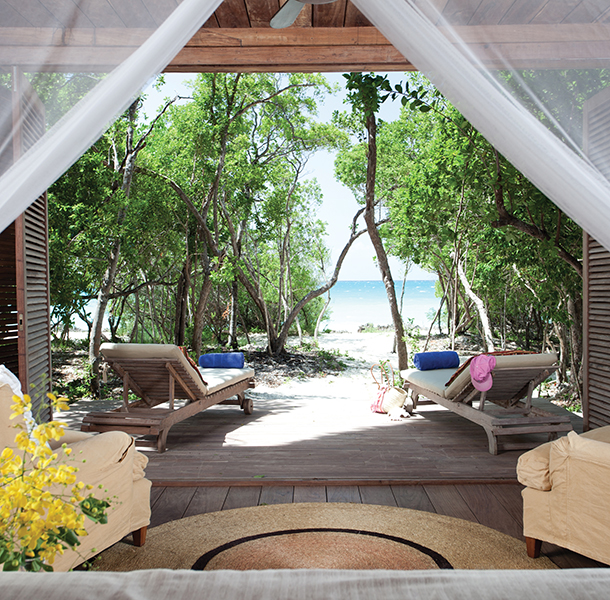
A Suluwilo bedroom with ocean view. Courtesy Roar Africa
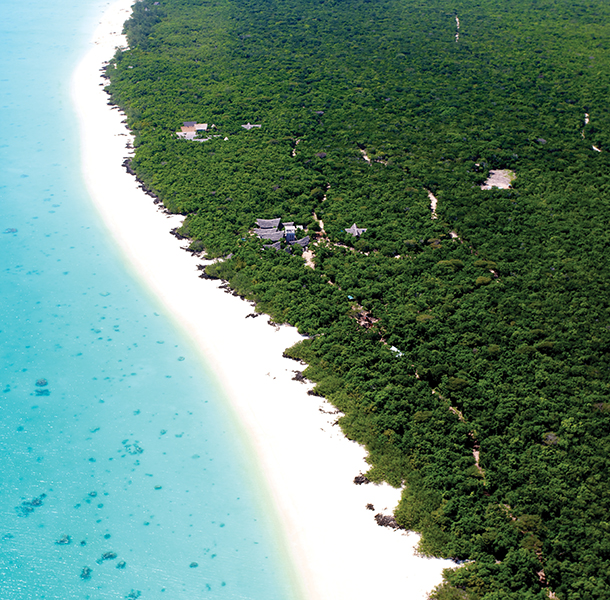
Suluwilo Beach on Vamizi Island. Courtesy & Beyond
Unstated, but undeniable, is the benefit of these locations being in paradise, complete with top hospitality services and accommodations. On Mnemba, the staff-to-guest ratio is 2:1 and there are never more than 24 guests. The tiny private island is a quarter-mile off the northeast coast of Zanzibar, featuring powdery sand, clear water, and a beachside banda for each couple. The open-sided, thatched wooden suites are furnished with four-poster beds, crisp linens, and mosquito netting on the shaded veranda and beach sala—where just-caught fish are delivered as an afternoon sushi snack.
Calm, warm waters double as a play-ground for marine life, including dolphins and humpback whales. Activities include windsurfing, paddleboarding, snorkeling, and diving. Boats are available for sun-downer sails, fly-fishing excursions, and dolphin swims—though many mornings you can swim with dolphins by simply wading into the water. This is also a nesting ground for the threatened green turtle, as well as many bird species.
And just as game drives are punctuated with insights on animal habitats, ecological factoids, and the history and culture of surrounding communities, these aquatic adventures can feature similar conversations led by a marine biologist or a local guide.
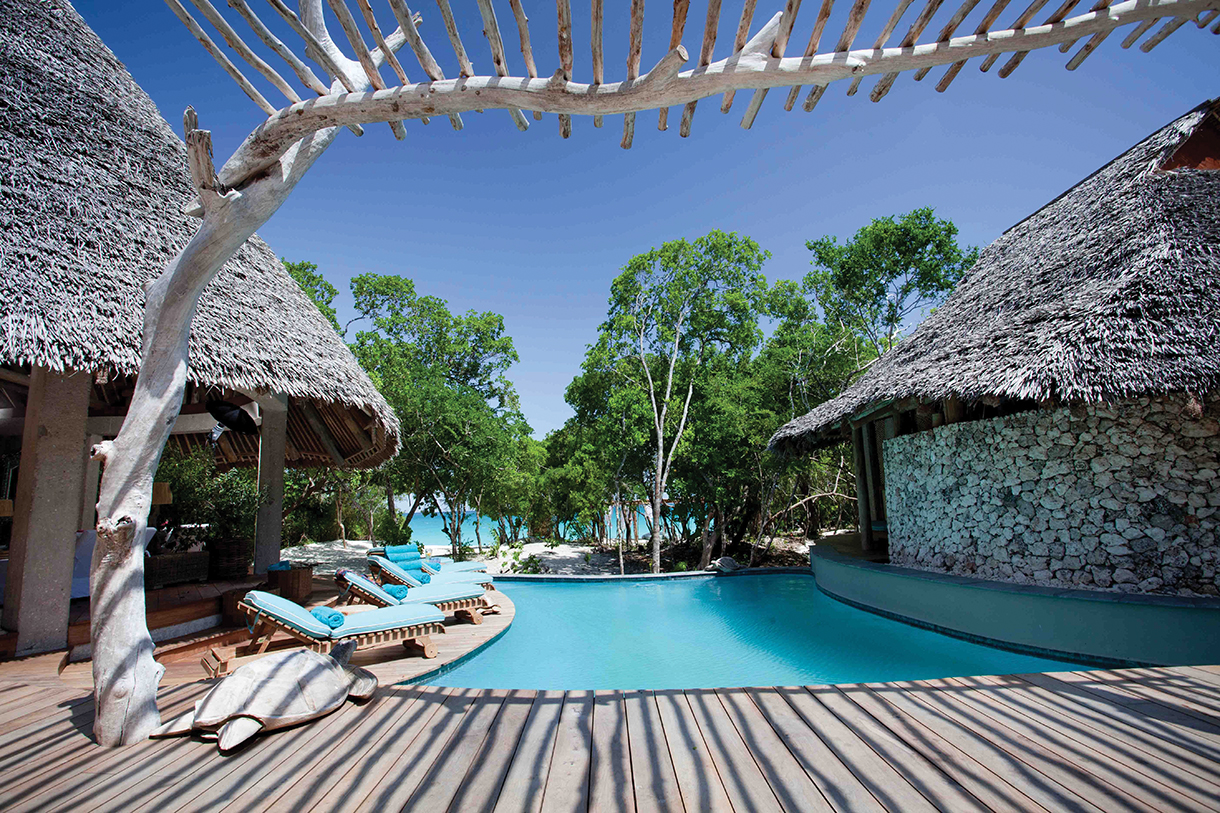
Casamina’s pool on Vamizi. Courtesy & Beyond
Mozambique’s Vamizi is a larger island that offers a very different vacation vibe, better suited for families and small groups of friends. There are six villas, each including a personal chef, butler, and housekeeper. Marine conservation and community engagement have been central to Vamizi’s development since 2002. “Many people from the east coast of Africa live in subsistence communities, very directly reliant on the reef ecosystem. So, any conservation decisions have to come from them or they won’t be successful,” Hempson explains. Today, the island has one of the healthiest coral reef ecosystems in the world, and its waters boast some of the most significant and endangered habitats and wildlife in the western Indian Ocean, with over 180 species of pristine coral and over 400 species of reef fish.
In August, whales migrate from Antarctica up Africa’s east coast to calve, as part of their breeding cycle. Seeing pods of 20 whales or more breaching and playing in the sea just off both islands is an almost daily occurrence during that period. And September is shark-tagging season, with gray reef sharks teeming in the waters around the island. One theory is that it’s an important breeding area, and Oceans Without Borders researchers are working to tag the sharks and record their movements to learn more.




